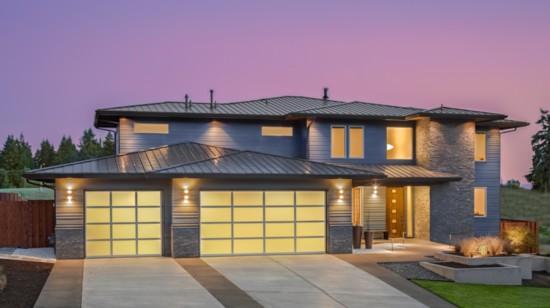As we enter a new decade, a more sustainable future for our families is one thing we all can strive towards achieving. Looking at ways to cut down on living costs and feel better about our living spaces is a priority among homeowners, and with new design features that create eco-friendly homes, there are many benefits to both homeowners and the environment.
WHY GO GREEN IN TREASURE VALLEY?
Eco-friendly houses are homes designed to save you money, energy and support the environment. Green building have progressed from more than just a trend to a way of life moving forward in Ada County. According to Boise City’s Planning Department, “Sustainability and building vibrant communities is at the core of who Boise is as a city; recognizing and supporting Green Building projects is one more way we are redefining how we continue to develop our city.” (Credit CityofBoise.org).
There are many local organizations who work to accelerate the implementation of smart, healthy and sustainable building practices in the Gem State. The US Green Building Council Idaho is one of those who “champions high performance, socially responsible and environmentally sensitive development” in Idaho by coordinating workshops, tours, and guest speakers to promote the exchange of best practices around green building, energy efficiency and sustainable development. https://www.usgbc.org/chapters/usgbc-idaho
But how do we go about creating sustainable homes for the everyday homeowner in the Treasure Valley? Below are some simple things you can do for your existing home or a new project, to help reshape our communities into sustainable cities of the future.
LET'S GET STARTED
1. Invest in Passive Design
Passive Design allows you to take advantage of the climate to maintain a comfortable temperature range in the home, improving indoor air quality, minimizing temperature fluctuations, and harnessing the sun for warmth and wind.
2. Choose Efficient Glazing
Glazed windows and doors bring in light, fresh air and access to views that help the home connect to the outdoors. To overcome thermal performance problems, select the right glazing systems for your orientation, climate and consider the size of each window and location of the opening.
3. Consider Your Materials
It’s important to choose products which are locally produced, renewable or have come from sustainable sources, even finding items from salvage yards, friends or family and recycled or second hand goods stores. Going green also means choosing products that are healthier and free from manufactured, synthetic materials, reducing carbon emissions and contributing to less waste.
4. Paint Your Roof White, Plant your Gardens & Grow A Tree!
An easy way to reduce your energy is to paint your roof white – it will reflect heat and save on costs. Plant a tree in the front yard for shade. And get that backyard greenery growing! Incorporate edible gardens, compost systems or take on a new hobby such as beekeeping. Fill your surroundings with herbs, veggies, worm farms and native plants or if space is limited try a vertical garden. Backyards promote sustainability and offers a place of refuge for both you, your family and the native wildlife.
5. Choose Energy Efficient Appliances
Appliances account for up to 30% of household energy use. While the initial outlay for these products can be more expensive, the savings can add up to more than any purchase price over the life of the appliance.
OTHER TIPS
– Washing clothes in cold water can save up to 10 times more energy than a warm wash.
– Reduce standby power. Many appliances use power when left on, even if not in use. This accounts for 3% of household electricity consumption
6. Go Modular
With modular homes, around 95% of the building occurs offsite and once installed the houses are placed on footings, significantly reducing disturbance to the land and environment to the habitat surrounding your home. Pollution from producing modular homes is far less than regular builds. By using one location facility, machinery usage decreases, along with transportation and logistics.
Sustainable homes don’t have to be complicated. Employing renewable technologies, eco-friendly materials, and clever design choices, you can create a home that is healthy for you, for our communities and for the planet.
